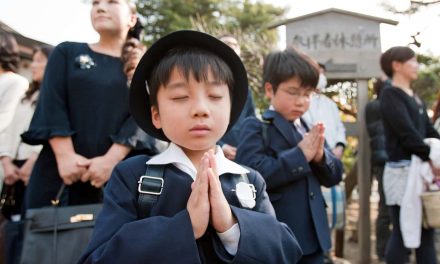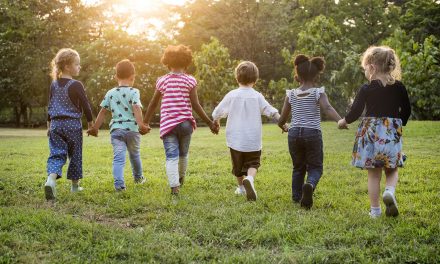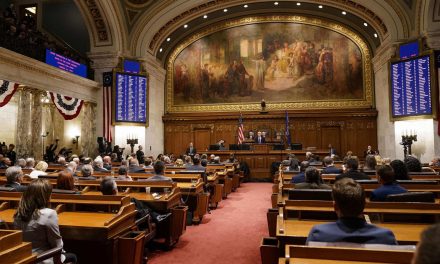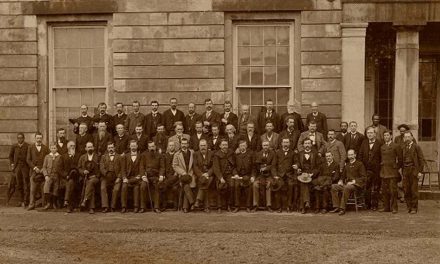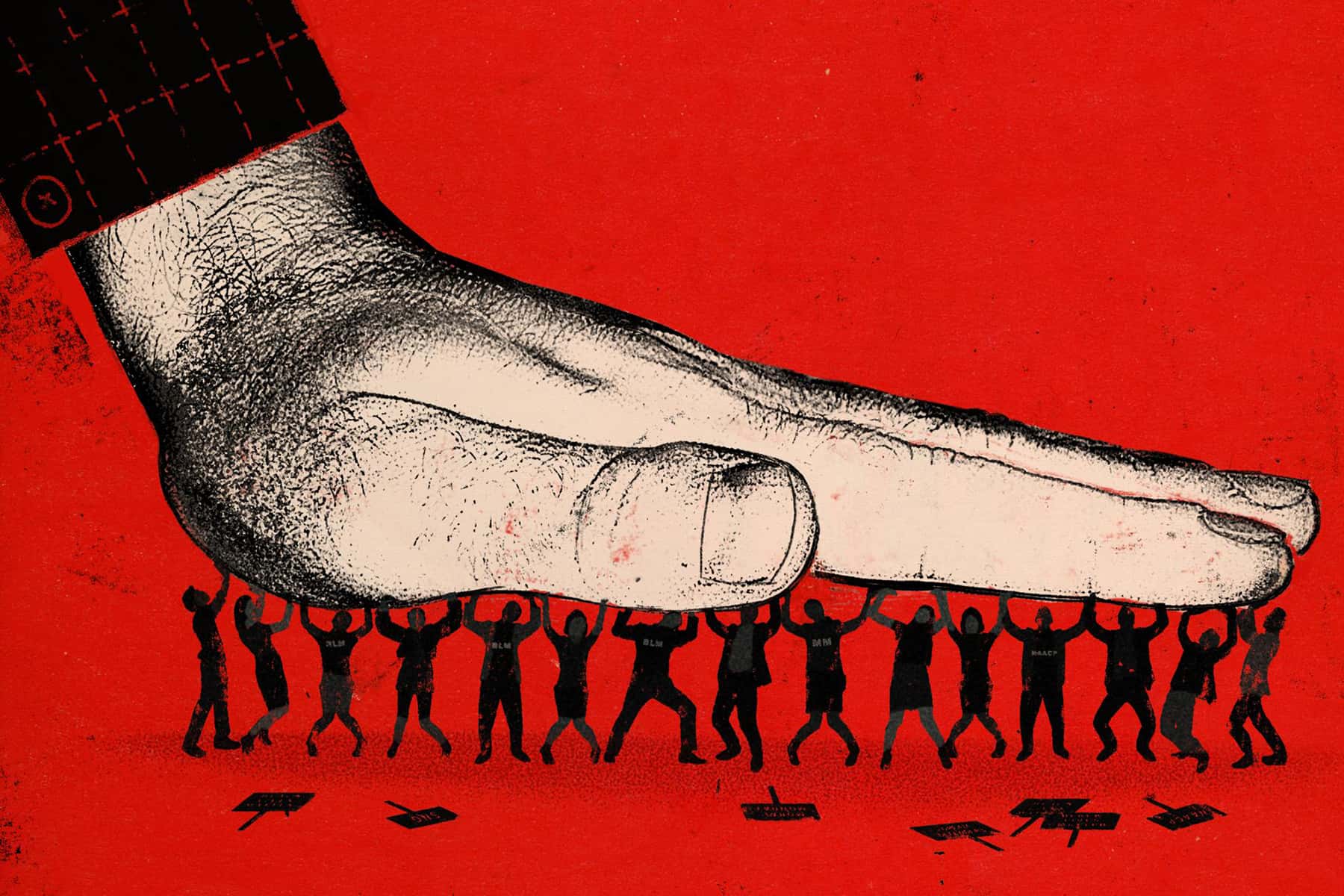
With unemployment approaching Great Depression levels, the nation is waving the white flag on controlling the coronavirus. It appears not to shock the senses at the White House or at many governors’ mansions around the country that the 76,000 deaths from COVID-19 in three months could fill the Superdome with coffins. Instead, these leaders are pushing to “open up America” as much as they can for commerce.
Following the lead of the Trump administration, governors tell us we cannot let the cost of the lockdown become worse than the disease. But scientists are already raising their death estimates by the tens of thousands to adjust for the rush back to business. The estimates make opening up the country this soon unconscionable on its face. What makes it worse is that the haste to hear assembly lines humming and cash registers ringing also represents America turning its face away from the communities most flattened because this nation failed early in the pandemic to flatten the curve.
African American and Latinx workers, who keep America humming, from the farm fields to the meat packing plants, have died from coronavirus at vastly disproportionate rates, yet their families, fresh from burying and cremating their loved ones, are now being told they must get back to work. They must work no matter how unsafe the conditions, no matter how little their states are testing for the virus, no matter if the rate of cases in their state is going up.
Thus, the reopening of America is a fatal closing of the door to science, sending common sense, compassion, and the common good into lockdown. It is the end of being in this crisis all together and the beginning of a retreat back to a social distance all too familiar along racial lines.
Ignoring the science
The science clearly shows that re-opening now almost certainly means more disease and death. According to New York Times May 8 tracking of US public health data, coronavirus cases are on the increase in 23 states, the District of Columbia and Puerto Rico. Only 14 states and Guam are seeing a decrease. In the 13 states and Puerto Rico where case numbers appear to be on a plateau, the Times warns that “a lack of widespread testing may mean that cases are being undercounted.” Of 30 states the Times is tracking that have reopened or plan to reopen very soon, the newspaper found that only 2 were conducting testing at above recommended levels needed to accurately identify infected people and isolate them to control the spread of the virus. Most were “well below” minimum levels.
Despite so few states meeting even the Trump administration’s own nonbinding guidance for safe re-openings, President Trump let federal social distancing guidelines expire and expressed ill-advised confidence that “the worst of the pain and suffering is going to be behind us.” Trump’s son-in-law and senior adviser Jared Kushner called America’s response to COVID-19, “a great success story,” despite this nation’s refusal to quickly adopt strategies that helped many other nations keep the virus relatively in check.
Meanwhile, some states are moving to aggressively reopen malls, retail stores, restaurants, gyms, bowling alleys, parks, and hair parlors and even ordering people to go back to work.
In Missouri, where cases are still increasing, Governor Mike Parson said, “When we open the state up, if you’ve got to go back to work, if your boss calls and says you have to go back to work, you have to go back to work.” In Iowa, where cases also are still increasing, state Workforce Development Director Beth Townsend said, “We want to remind all individuals that if you are recalled to work and choose not to return, you may lose eligibility for unemployment benefits in addition to losing your job.”
In Oklahoma, which has a minimum wage of $7.25 an hour and where, yet again, new cases are increasing, state officials are already offering up stereotypes of COVID unemployment pay fraud. Teresa Thomas Keller, the deputy director of the Oklahoma Employment Security Commission, said, “If there is a claimant out there that says, ‘You know what, I can make more money sitting at home, drawing this extra $600, and some other benefits,’ then if the employer will contact us, that is considered a refusal of civil work and we will cut off their benefits.”
An economic Civil War
These are the first shots fired in an uncivil economic war. Echoing the real Civil War, a centrifugal force is racism, as COVID-19 has exposed every racial disparity in America. Decades of structural racism in housing, education, employment, health care, and targeting for tobacco and unhealthy foods have already put African Americans, Latinx, and Native Americans in the crosshairs of the first wave of the virus. Many families were sitting ducks, living in dense developments and multi-generational homes, working in low-paying “essential” service jobs, or suffering from conditions like diabetes or asthma that make them more susceptible to disease.
Death is the final disparity. According to the APM Research Lab, Kansas and Wisconsin are both 6 percent black, but African Americans account for 32 percent of each state’s coronavirus fatalities. Missouri and Michigan are respectively 11 percent and 14 percent black, but African Americans are 39 percent and 43 percent of the COVID dead.
In the Deep South, African Americans make up between 27 percent and 38 percent of the populations of South Carolina, Mississippi, Georgia, and Louisiana, but thus far account for between 52 percent and 58 percent of coronavirus deaths. In a summary of the data from 38 states and the District of Columbia, APM said that if African Americans had died of COVID-19 at the same rate as white Americans, “about 9,000 of the nearly 15,000 Black residents who have died in these states would still be alive.”
That makes it a cruel form of white privilege for Iowa Governor Kim Reynolds to say, “we must learn to live with COVID virus activity without letting it govern our lives.” It’s a lot easier for white people (for now) to “live with” the virus when nearly half the coronavirus cases in a state that is 91 percent white are currently afflicting Latinx, African Americans, and Asian Americans. It should also not be forgotten Asian Americans all over the nation have endured hundreds of incidents of discrimination during the crisis, as the Trump administration, with no basis, blames China for the outbreak in the US.
Missouri plowed ahead with its reopening over the protests of black clergy. State Democratic Party Secretary Rev. Darryl Gray said, “there is no evidence that the coronavirus pandemic has slowed down in black communities. Why should people who are already suffering disproportionately in so many other ways, subject themselves to sickness and possible death?”
Denying the disparities
These leaders are in abject denial of data offering stunning new projections of carnage. We will assuredly surpass 100,000 deaths by early summer and models available on the CDC’s website show up to 183,000 deaths by August. That’s more than three Yankee Stadiums worth of coffins. Cases are decreasing in only three of the nation’s 10 most populous states, New York, Pennsylvania, and Michigan, while they are increasing in Texas, Ohio, and Florida, and unsatisfyingly flat in California, Georgia, North Carolina, and Illinois, as possible under-counting remains unaccounted for.
The most sobering modeling comes from the Wharton School at the University of Pennsylvania. According to this research, if the nation had maintained a unified stay-home strategy, we might have limited the carnage to 116,000 people by July. Partial re-openings with strong social distancing would see the number climb to 160,000. But a collapse of social distancing during the partial re-openings could result in up to 350,000 deaths by July.
None of those numbers or trends matter to an anti-science White House and conservative governors similarly allergic to epidemiology. In his latest sidelining of the Centers for Disease Control and Prevention, the Trump administration rejected meticulous recommendations to reopen workplaces, day care centers, camps, churches, public transit, and restaurants and bars. Following suit, states such as Arizona, Texas, Florida, Georgia, and Iowa were cited by the Washington Post as either ignoring health experts or limiting health information in their reopening.
Since science does not matter to such leaders, one can reasonably guess that something else is also irrelevant in reopening the country: structural racism. It’s hard enough to get a bipartisan discussion on this in normal times, as many Americans reject any discussion of how white privilege is derived from it.
To them, any factoring in of disparities in public policy is a zero-sum theft of personal freedom (as witnessed by the anti-lockdown protests laced with white nationalism). In reopening their states, conservative governors are banking on the unspoken hope that the majority of white people can seal themselves off from the most deadly pandemic since 1918, dodging the droplets of the virus with their disproportionate ability to work from single-family homes, enjoy recreation in relatively unpopulated open spaces, and shop safely with their nearly universal levels of individual vehicle ownership.
Left unsaid is that much of that privilege actually derives from poorly-paid service sector workers—disproportionately people of color. Most newsworthy is meatpacking, which Trump declared to be “critical infrastructure” under the Defense Production Act. Long known for cramped working and living conditions, the industry is now wracked with coronavirus outbreaks that the Midwest Center for Investigative Reporting says have infected 11,500 workers and family members in 29 states and killed 49 workers. In Iowa alone, the state reported Tuesday that 1,600 meat packing workers have been infected at four plants, nearly 1,400 of them at three Tyson facilities.
Meat is Critical Infrastructure. Workers Not So Much.
According to the Center for Economic and Policy Research, 70 percent of meat packing plant workers are Latinx or black, as are workers in the fields who sort and grade fruits and vegetables. The respective average hourly pay for packers and sorters is $13.68 and $11.84.
Once the meat is butchered and the fruits and vegetables picked, two-thirds of food processing workers are Latinx, African American, and Asian American. Once the food goes to restaurants, Latinx people, who comprise 18 percent of the US population, make up 37 percent of the cooks, 34 percent of dining room, cafeteria attendants and bartender helpers, and 29 percent of dishwashers. African Americans, comprising 13 percent of the population, account for 20 percent of food prep and fast food workers. The average hourly wage in the food preparation and service industry is $12.30 per hour.
The reopening of retail and office space literally has a dark side as Latinx and African Americans comprise half of janitors and building cleaners (making $14.43 per hour), nearly half of security guards ($15.88 per hour), and more than 40 percent of cashiers ($11.72 per hour). As industry in general revs back up, we should not forget that more than half of truck and tractor operators, vehicle and equipment cleaners, and packers and packagers are also black and brown, earning an average of $18.24 per hour.
And of course, should workers get COVID-19, the first person they might see going to the hospital is a person of color. African American and Latinx workers make up nearly half of the nation’s 6.5 million health care support employees, earning an average of $14.91 per hour.
There is no acknowledgment of any of that in the call to “open up the country.” Trump made meat plants essential to “ensure a continued supply of protein for Americans,” but there is nothing included in the order to ensure the health of American and immigrant workers. The guidance from the Occupational Safety and Health Administration merely suggests that plants “should” follow distancing and hygiene guidelines, “if feasible.”
The message, in other words: Meat is critical. Meat packer health is optional. How optional? In Wisconsin, during hearings on the legality of Governor Tony Evers’ stay-at-home order, State Supreme Court Chief Justice Patience Roggensack appeared to dismiss as insignificant the state’s most serious single coronavirus outbreak at a meatpacking plant in Green Bay, home of the famous football team named after the industry. Despite nearly 300 workers being infected, Roggensack (whose court infamously forced Wisconsinites to risk their lives last month in last month’s primary election) said, “These were due to the meatpacking… It wasn’t just the regular folks.”
The evidence of how meat packers are not regular folks to Roggensack, the Trump administration, governors, and plant owners can be found is a heartbreaking story from Georgia. The New York Times recounted how Annie Grant, a 55-year-old Tyson poultry worker, was essentially ordered to come back to work despite a severe fever. “My mom said the guy at the plant said they had to work to feed America,” said one of Grant’s sons.
The son watched his mother die via cellphone. Another worker, 36-year-old Tanisha Isom, who makes $12.95 an hour deboning chickens, told the Times, “How many more have to fight for their life, how many more families got to suffer before they realize we are more important than their production? We are crying out for help, but no one is listening. Our work conditions are out of control. We literally work shoulder to shoulder.”
Stark racial disparities on display in Georgia
Exhibit A of how white conservative leadership is not listening can be seen in Georgia. Governor Brian Kemp, legendary for his voter suppression efforts when he was secretary of state, reopened all kinds of intimate establishments, saying, “the negative effects of not having our economy starting to open up was beginning to have the same weight as the virus itself, especially if you weren’t in the medically fragile category.”
Like Kim Reynolds in Iowa, that’s easy for a white governor to say when white people were not medically fragile in the first COVID wave. Georgia is 61 percent white, yet only 11 percent of racially-identified COVID patients were white. Instead, 83 percent of hospitalized patients were African American, according to the Centers for Disease Control and Prevention.
The CDC is headquartered just six miles from the Georgia state capitol building. The team that assembled the report included researchers from Kemp’s own state department of public health. The report said, “It is critical that public health officials ensure that prevention activities prioritize communities and racial groups most affected by COVID-19.”
It tells you a lot that Kemp re-opened Georgia without consulting the African American mayors of the state’s two largest cities, half-black Atlanta and half-black Augusta. Atlanta Mayor Keisha Lance Bottoms said the opening up of the state this soon means “opening up breeding grounds that can be deadly for our community.”
How deadly? To date, 1,300 Georgians have died of COVID-19. Under forecasts that factor in the reopening of businesses, those numbers are likely to grow dramatically. At least three models project the state’s death toll to rise to between 4,500 and 4,900 by some point in the summer. The Wharton model warns those above numbers could double if the partial reopening is compounded by reduced distancing.
At the national level, because COVID-19 has been out of control for many weeks in so many communities of color, many civil rights leaders and religious leaders who say they represent 25 million church members, condemned the reopening of America in an open letter. Many leaders are urging African Americans to continue to stay home as much as possible, no matter how much a governor has “opened” the economy.
In the open letter, they said the actions of governors “demonstrate reckless disregard for the health and life of Black residents.” One of the signatories, Sherrilyn Ifill, president of the NAACP Legal Defense and Education Fund, told National Public Radio that the reopening of states has become a “savage and feral contest between politics and public health, and African Americans are caught in the middle.”
Politics savages public health
We do not fully understand how savagely people of color are caught in the middle and suffocated to death by COVID-19 between the Trump administration’s disbanding of pandemic advisory panels before the crisis, its early dismissal of how coronavirus might spread, its horrific failure to ramp up testing and tracing, and lackadaisical racial data collection that still has a quarter of the states not reporting death by race. Many groups concerned with racial, health, and science equity have also written open letters demanding full racial data, including the Union of Concerned Scientists.
What we do understand is that unless we’re all in this together, coronavirus will be the source of a modern civil war that threatens to tear our social fabric into shreds. On one side we have a president who says white nationalists are good people and impatient governors threatening to financially flog people into going back to work despite increases in coronavirus cases.
On the other side, there is Regina Ellis, an African American hair salon owner in Albany, Georgia, which has been hit particularly hard by COVID-19. Saying it was not safe to reopen while the pandemic was still raging throughout the state, she opposed the reopening and said her customers understand. As she told National Public Radio, her customers “don’t want to come to the salon just to look good in a casket.”
Joining Ellis, there is Shynekia Emanuel, who works at the same Tyson plant in Georgia where Annie Grant died. He told the New York Times that he will not go back to work until he is convinced conditions are safe, particularly because he is more vulnerable to COVID-19 given that he suffers from Crohn’s disease. “Nobody wants to risk their lives over some chicken. Sorry. My life and my son’s life is way more important.”
And Ellis and Emanuel are flanked by Kim Cordova, union president for meat packers and food workers in Colorado where there have also been virus outbreaks in meat plants. She told local television last month, “I think the workers are being sacrificed. I think that this could potentially be a death sentence.”
This is what reopening looks like in the United States today. To the White House, governors, and the privileged, they are merely reopening business. To the laborers who keep those businesses open, the madness of being forced back to work when coronavirus still rages reopens the enduring wounds of structural racism, as if the economy itself were a plantation.
The coronavirus is proving beyond anything we’ve known in modern times how an infected wound can be a death sentence.
Derrick Z. Jackson
Curt MеrIо
Originally published on Common Dreams as The Push to Relax COVID-19 Protections Exposes Age-Old Racial Wounds

